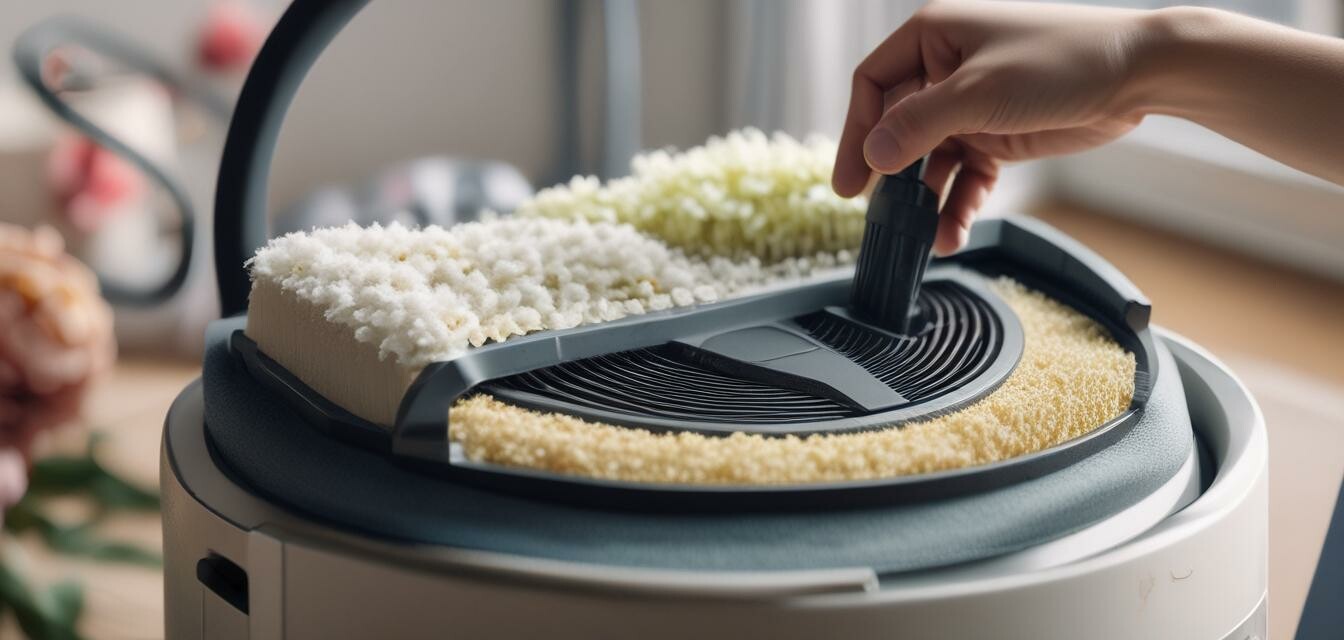
This article was generated using AI and is based on real customer reviews from the Amazon platform. It contains affiliate links, meaning we may earn a commission—at no extra cost to you. As Amazon Associates, we earn from qualifying purchases.
Understanding filter changes for allergy control
- Regular filter changes improve vacuum performance and allergen capture.
- HEPA filters should be replaced every 6–12 months.
- Bagged vacuums require bag changes based on usage frequency.
- Maintenance schedule varies depending on the type of vacuum.
- Following manufacturer recommendations is crucial for optimal performance.
Allergy sufferers often rely on vacuums that can effectively capture and contain allergens. Understanding when and why to change vacuum filters is crucial in maximizing allergen capture and ensuring the vacuum operates efficiently. In this article, we will delve into the importance of regular filter changes, the various types of filters available, and practical tips for maintaining your vacuum.
The importance of regular filter changes
Filters play a pivotal role in trapping pollutants, dust, and allergens before they can be released back into the air. Over time, filters can become clogged with dirt and debris, which can lead to reduced suction power and less effective allergen capture.
How filters work
Filters work by allowing air to pass through while trapping smaller particles. The most effective filters for allergy control are HEPA filters, which can capture 99.97% of particles as small as 0.3 microns. Understanding the anatomy of your vacuum’s filter system can help you decide how frequently to change your filters.
Types of vacuum filters
| Filter Type | Replacement Frequency | Effectiveness |
|---|---|---|
| HEPA Filters | 6–12 months | Captures 99.97% of particles 0.3 microns and larger |
| Charcoal Filters | Every 3-6 months | Reduces odors and volatile organic compounds |
| Foam Filters | Every 1-3 months | Pre-filters larger particles to extend the life of other filters |
How to know when to change your vacuum filter
Several indicators can signify that it’s time to change your vacuum filter:
- Reduced suction power: If you notice decreased performance, it could be a sign of a clogged filter.
- Increased allergens in the air: If your vacuum is not capturing allergens efficiently, a filter change might be necessary.
- Visible dirt or discoloration: Filters that are stained or dirty may no longer be effective.
- Manufacturers' recommendation: Always follow the schedule suggested by your vacuum’s manufacturer.
Vacuum maintenance schedule
Maintaining a consistent vacuum maintenance schedule can optimize its performance. Here’s a suggested maintenance timeline:
- Daily: Empty dust bins or replace bags as necessary.
- Weekly: Clean brushes and check hoses for clogs.
- Monthly: Check and clean pre-filters.
- Every 6-12 months: Replace HEPA filters.
Tips for changing filters
Beginner Section: Changing your filter
- Always turn off and unplug your vacuum before changing the filter.
- Consult your vacuum's manual for specific instructions on filter placement.
- Keep a replacement filter handy to ensure you can change it immediately.
- Regularly inspect the condition of your filter even if it’s not time for a replacement yet.
Conclusion
Regular filter changes are crucial in maintaining the efficiency of your vacuum and, by extension, ensuring that your home remains as allergen-free as possible. A well-maintained vacuum cleaner not only improves indoor air quality but also prolongs the lifespan of your appliance. By following the guidelines in this article and adhering to your vacuum’s maintenance schedule, you can create a healthier living environment for you and your family.
Pros
- Improved allergen capture efficiency.
- Enhanced vacuum performance and suction power.
- Longevity of vacuum appliance.
- Better indoor air quality.
Cons
- Ongoing maintenance required.
- Cost of replacement filters can add up.
- Vacuums without clear indicators may lead to forgetting scheduled changes.
For further reading, explore our HEPA filter vacuums or check out our buying guides for tips on choosing the right vacuum for allergy control.